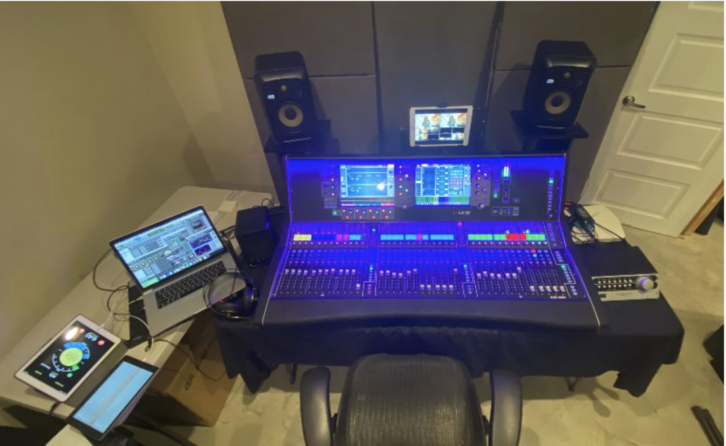
New Zealand has one of the lowest incidences of COVID-19 in the world, with only 2,644 cases to date. As a result, large-scale events have resumed in the island nation, including the recent annual Passionate Women’s Conference—the country’s largest event for Christian women. Australian sound engineer Rich Bryant usually travels to Wellington to mix the event broadcast, but due to travel restrictions, he wound up mixing a broadcast feed from his studio in Sydney just over 1,400 miles away.
The event, held in the Michael Fowler Centre in Wellington, included music, worship and spoken word presentations, so Bryant had his hands full. Conferring with Andrew Crawford at Australian A&H distributor TAG about how to approach a remote mix, he opted to work with Wellington-based Lampros Sound, which provided an Allen & Heath dLive DM64 MixRack at the venue that Bryant could control remotely from his Sydney studio. The DM64 was fitted with a Dante card for interfacing with the onsite AV network, plus a Waves card for virtual soundcheck and additional output processing.

The DM64 was connected to a dLive S7000 control surface in Sydney via a secure VPN connection, managed by Riverbed’s SD-WAN service, using the integrated network ports on both units. Luke Sheaves of Riverbed was on hand to provide IT and network support in Sydney, with Alistair Lambie of Lampros Sound monitoring the connection on the New Zealand end.
Audio and video monitoring of the broadcast feed in Sydney was provided via an SRT stream to Bryant’s iPad, arriving with under 150 ms of latency. Another tool put to use was Audiomovers software, fed by the Waves card in the DM64, which was used to monitor the Solo/PAFL bus with a latency of 200ms. The Intercom Unity app, running on a second iPad, was used to handle comms between Bryant and the technical team in the venue.
Back onsite in Wellington, another DM64 – configured for multi-surface operation – was used to handle both FOH and MON duties, with a pair of S7000 control surfaces deployed for engineers Andrew Forde (MON) and Simon Faisandier (FOH). Two DX168 expanders were added to feed performer IEMs and provide additional AV I/O, with Waves and Dante cards utilized for audio transport and additional processing.
“What started as an ambitious endeavor ended as a resounding success” reflects Rich. “It was a truly ground-breaking weekend, and we couldn’t have done it without the dLive, and the support provided by TAG, Lampros Sound and Riverbed.”
Allen & Heath • www.allen-heath.com










